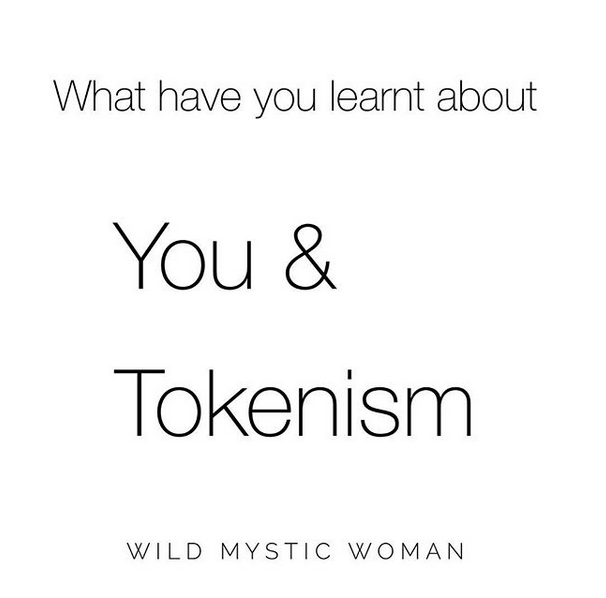
Me & Tokenism
I’ve tried to create and maintain relationships with BIPOC to benefit from their perspectives and as a way to change the fact that most of the people I know are white. I am guilty of trying too hard to build these friendships too quickly and aggressively rather than allowing a natural progression so I can hurry up and become less racist faster, as well as become trusted and accepted by BIPOC, proving that I am worthy of their time and attention so I can somehow feel like I’ve won something.
I’ve forced myself to swipe right on black men’s dating profiles even though I wasn’t sure if I felt attracted to them or liked what they wrote in their profile because I felt an internal drive to prove, even to myself, that I’m not racist. It feels racist to swipe left of a man of color, but it’s even more racist to swipe right to try to prove a point. The dates I’ve gone on with black men have had the racism elephant in the room. I’m so aware of our racial differences and I can’t get past it to see who he is or what kind of connection we might have.
As a website designer, I’ve been complicit in so much tokenization. Many of my clients ask me to make sure their websites look racially and sexually diverse so that they may have the illusion of inclusion even when I honestly don’t see it in their business or practice. It’s one notion to be aware to not show only images of white people, but it’s another thing to be curating a perfect rainbow variety making sure everyone is represented in order to attract the most business – even under the guise of wanting “everyone to feel welcome.” I’ve yet to call out any of my clients for tokenization. I’ve put my name on those websites and profited from them those clients.
I’m learning to be much more discerning about differentiating companies, organizations and events that actually practice and have racial equity built in to their businesses and those that are in it for the optics. I’m realizing that unless we all consistently do our anti-racism work, truly racially diverse spaces won’t exist because BIPOC will not feel safe or decide to stay/come back.
This is in response to Layla Saad‘s 28 Day #MeAndWhiteSupremacy Instagram Challenge. @wildmysticwoman
Day 17: “Tokenism occurs when BIPOC are used as props. There are 3 types of tokenism that come to mind: 1) When a dominantly white organisation or event engages a few ‘token’ BIPOC or BIPOC culture to give the visual effect of ‘diversity’, without being actually committed to inclusion or anti-racism in practice or policy. 2) When a white privileged person or organisation puts the expectation on token BIPOC to carry the emotional labour of discussing and working on all matters related to racism, thus reducing them simply to their race. 3) When a white privileged person uses their proximity to BIPOC to ‘prove’ they can’t be racist. E.g. I can’t be racist because my partner/ex/children/family members/best friends/teachers/favourite writers, entertainers, activists, athletes, entrepreneurs, etc are BIPOC.
In all cases BIPOC are used as token props to prove one’s non-racism. It goes without saying that this is dehumanising because it strips away our humanity and treats us as ‘get out of racism free cards’ that can be whipped out at any time. It is particularly insidious when used against another BIPOC, because it is weaponising one BIPOC against another (e.g. A black woman calls you out on your racism and you shoot back with the fact that you have a black child/best friend/partner, so you can’t be racist).
What have you learnt about You & Tokenism? How have you justified your racism by using your proximity to BIPOC? How have you tokenised BIPOC to prove your words, thoughts or actions are not racist? How have you tokenised and weaponised one BIPOC against other BIPOC? If you are a business owner, how have you tokenised BIPOC or BIPOC culture in your brand? If you have believe you have never tokenised BIPOC, how have you stayed silent when you saw it happening? When you’ve lauded organisations/events for being ‘diverse’ because they appear to have a few BIPOC, how much further have you looked into their practices and policies? How have you mistaken the ‘look’ of diversity for actual inclusivity and equity?” – Layla Saad